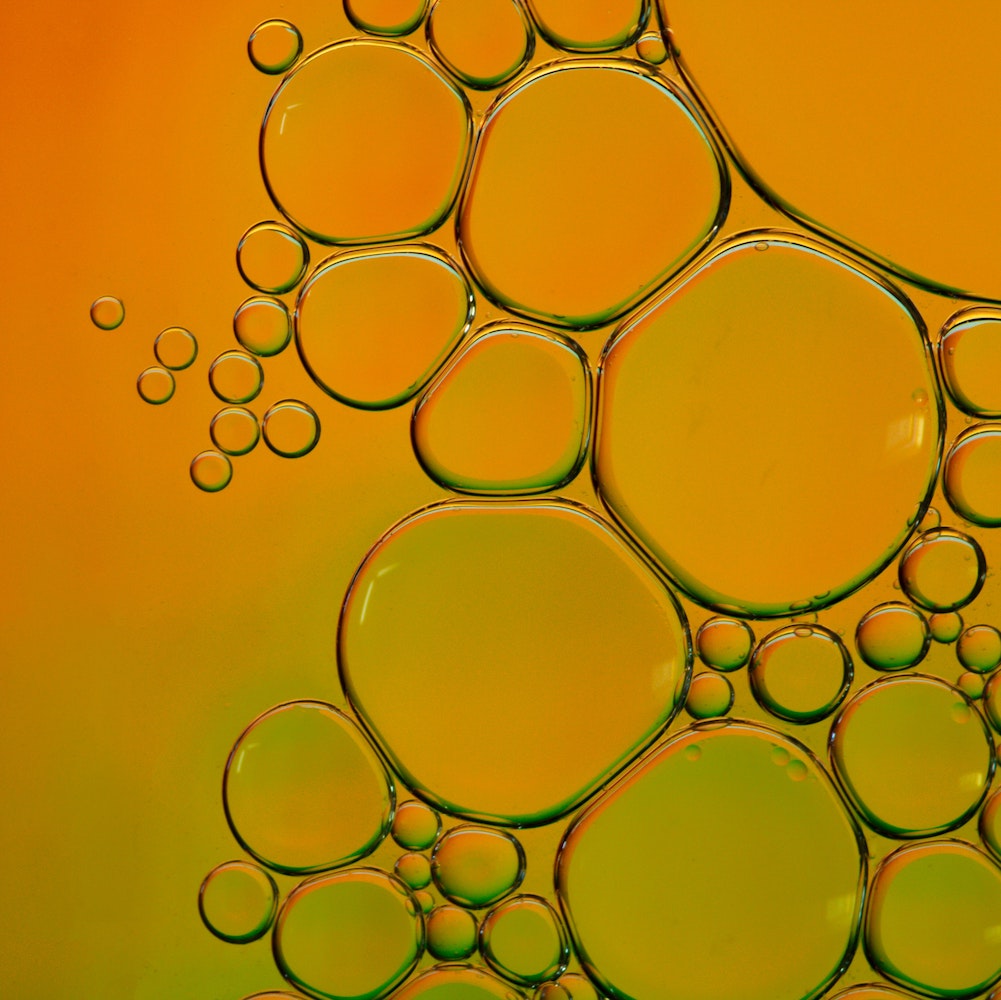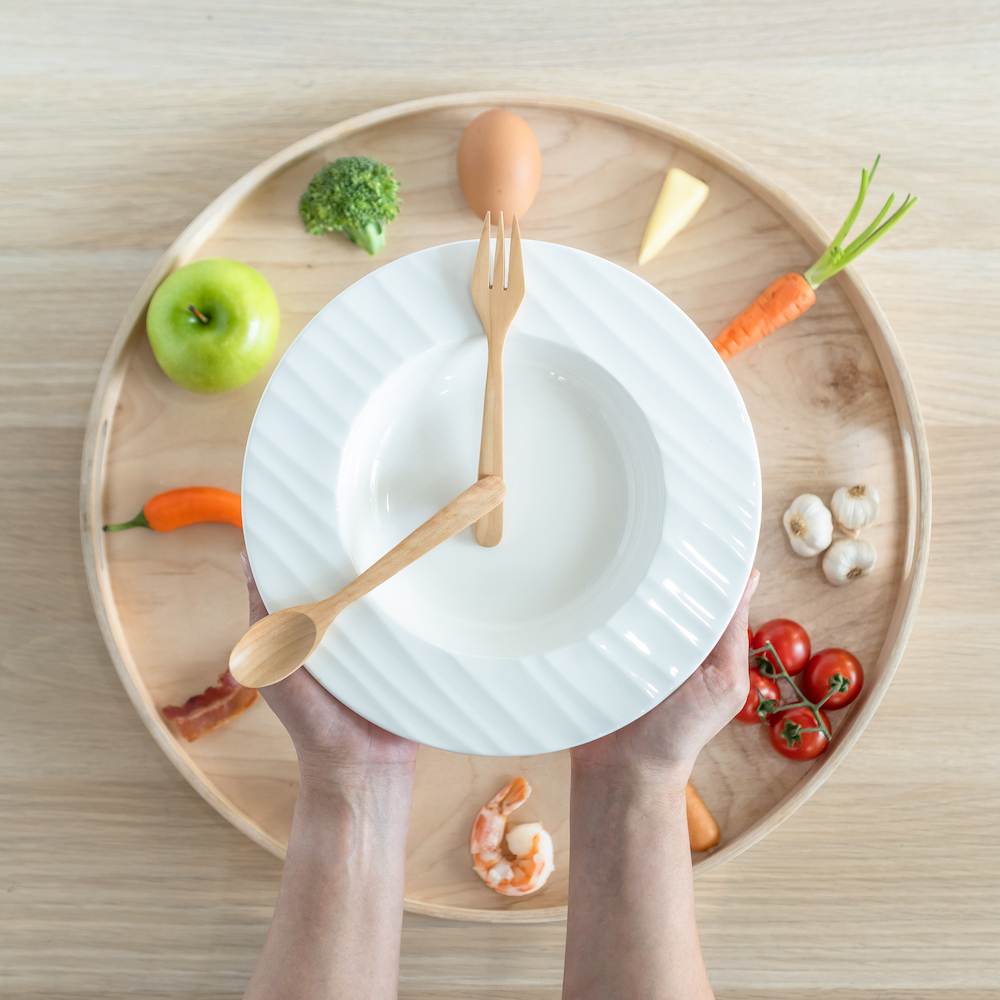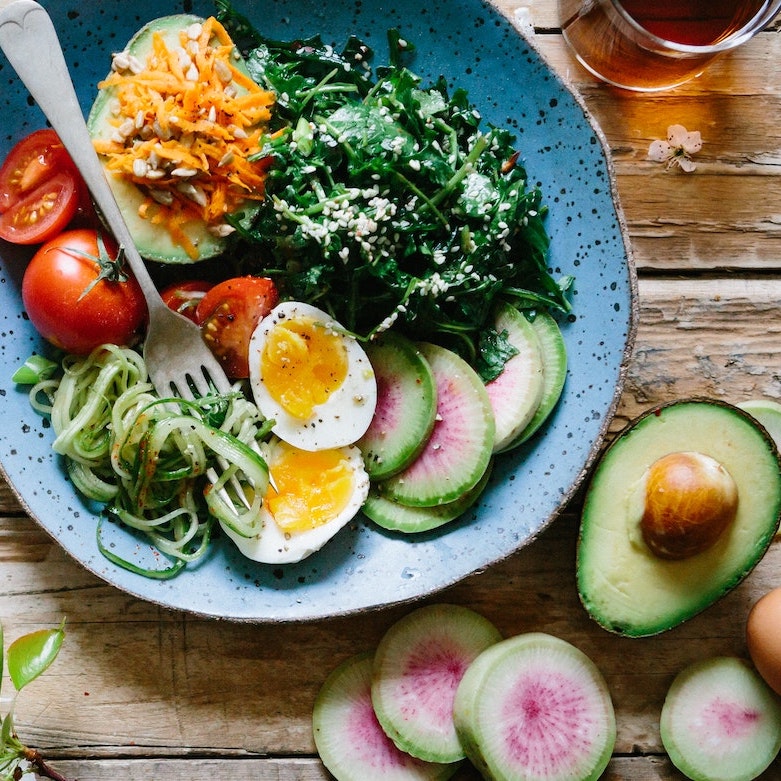TOPIC · CARBOHYDRATE - EVERYTHING YOU NEED TO KNOW
Every week I am posting about everything you need to know about hormones. This weeks topic is about carbohydrates.
Did you know – Carbs in food
- Carbohydrates also called saccharides are the primary biological way the body stores and creates energy.
- The word saccharide comes from the Greek “sakcharon”, which means sugar
- So, carbohydrate is the same as sugar!
- A carbohydrate contains 4 calories of energy per gram.
- ALL carbohydrates end up as glucose
- Carbohydrate is the family name for a group of four different types – monosaccharides, disaccharides, oligosaccharides, and polysaccharides = one, two, a few, and many sugar-molecules
- Unlike protein and fat, carbohydrates are easily digested and broken down into glucose which all cells can use to make energy.
- Glucose is the brain preferred energy source
- Red blood cells and the retina of the eyes can ONLY use glucose as their energy source
- Cancer cells can only use glucose as their energy source
- Carbohydrate can be stored in small amounts as glycogen in the liver and muscles.
- Carbohydrates can be stored in unlimited amounts as fat in fat cells, which can be stored just under the skin, around internal organs, etc.
- Carbohydrates are mainly found in foods that don’t have eyes, such as fruits, vegetables, pulses, grains, seeds, nuts, and their produce such as breads, pasta, cakes, biscuits and from sugar cane and sugar beet
- In 1960 the diet was composed of an equal number of calories from fats and carbohydrates approx. 40% of each
- Today carbs comprise more than 50% of total calories and fats less than 30%
- Sugar is often added to foods to affect taste and make the foods more palatable.
- Optimal intake is individual and affected by age, sex, activity levels, hormonal state, etc
- For most people between 20 – 40g per meal is more than enough
- Counter to popular perception, carbohydrates may contribute more to obesity and cardiovascular disease risk than saturated fat
Meet Sally and get to know all about carbohydrates
Intro
All about glucose
All about fructose
Polysaccharides
What is fibre good for
Understanding the Word Carbohydrate
- Carbohydrate is just another name for sugar
- The main sugar is glucose
- Every time you eat carbohydrate regardless of whether it is processed, simple or complex you will end up with more or less glucose
- ALWAYS ask yourself – How much glucose do I need right now before putting the carbohydrate food in your mouth?
The Carbohydrate Family
Monosaccharides
- Single sugar molecules
- Glucose – also known as dextrose, found in all carbohydrates
- Fructose – the sweetest tasting of all the sugars, also known as fruit sugar
- Galactose – part of milk sugar
- Need no digestion
- Absorbed directly into the blood stream
Glucose
- The most abundant monosaccharide / sugar
- Is made by plants and most algae during photosynthesis
- Is found in all plant foods, ie. everything we call carbohydrate
- Is sweet but only 65% as sweet as fructose – this is why ALL carbohydrates taste sweet
- Is the most important source of energy in all organisms
- ALL animals are able to produce glucose
- We humans produce glucose from the breakdown of glycogen in the liver and from the breakdown of proteins via a process called gluco-neo-genesis, which means making glucose from non-carbohydrates, ie. your muscles
- Nerve cells, cells of the renal medulla of the kidney, the retina and red blood cells depend on glucose for their energy production (can’t burn fat).
- Adults produce approx. 180 to 220 g of glucose in the liver during a 24 hours period
- Glucose is transported in the blood to all cells for energy and storage
- Blood glucose should be maintained between 4 – 7 mmol/L or 72 – 140 mg/dL
- Glucose uses special transporters to get into the cells, some of these transporters need Insulin to operate
- Diabetes is a metabolic disorder where the body is unable to regulate levels of glucose in the blood
- Small amounts of energy / ATP can be made from glucose without oxygen
- The biggest energy / ATP production from glucose requires oxygen.
Fructose
Fructose – Friend or foe?
- The sweetest of all the sugars
- Found ‘naturally’ in fruits, veggies, sugar cane and honey, where it is often bonded to glucose making the disaccharide sucrose
- Found ‘unnaturally’ in HFCS, where it is always as a monosaccharide ie. not bonded to glucose which increases absorption rate and availability
- Human intake of fructose from fruits and veggies was previously approx. 16 – 20 gm per day, where fibre would also affect absorption speed
- Today for many the daily intake can be 85 – 100 gm or more and no fibre to decrease the absorption
- Fructose is not directly used by the body but can be converted to glucose or fat, depending on the need for glucose. The conversion takes place in the liver
- Non Alcoholic Fatty Liver is a result of the excess conversion of fructose to fat
- Because fructose doesn’t affect blood sugar many wrongly think this to be advantageous for Diabetics – wrong
- Studies show that high levels of fructose is associated with increased risk of obesity, diabetes, and cardiovascular disorders that are part of metabolic syndrome
- HFCS is processed corn starch, which in its natural state is long chains of glucose ie. a polysaccharide
- HFCS is the manipulation / conversion of glucose to create fructose (because its sweeter)
- How much is converted is up to the manufacturer
- HFCS 55 (55 % fructose) is used in soft drinks and sodas
- HFCS 42 (42 % fructose) is often used in baked goods, such as cakes, biscuits, bread, etc
- Regular table sugar / sucrose is 50% fructose bonded to 50% glucose
- Fructose content in fruits varies and is mostly bound to glucose and the fruit contains fibre all of which decrease the speed of absorption
- Eat your fruits don’t juice them.
Galactose
- Like fructose is not directly used by the body
- Rapidly converts to glucose in the liver
- Found in dairy products, avocados, sugar beets,
- It is a component of blood cells that determines blood type A, B, or O
Disaccharides
- Means 2 monosaccharides or 2 sugar molecules are joined together
- Glucose + galactose = Lactose which is milk sugar
- Glucose + fructose = Sucrose commonly known as table sugar and found in fruits
- Glucose + glucose = maltose which is found in plant foods especially germinating grains and seeds, also created when glucose is caramelized, such as toasting and also created when polysaccharides are digested.
- Maltose is often used a sweetener, eg. Beer making
- Disaccharide SHOULD be easy for the gut to breakdown into monosaccharides, but many have problems which can lead to gut symptoms like pain, cramps, bloating, diarrhoea and if left unattended can lead to leaky gut
- Lactose intolerance is well known, which is created by a lack of the enzyme lactase responsible for breaking down milk sugar into glucose and galaktose
- Sucrose and maltose use a different enzyme called sucrase-isomaltase, which is rarely deficient but excess intake of sucrose and maltose can be a problem for some, creating similar symptoms to lactose intolerance.
- Solutions are to avoid or limit the foods containing lactose, sucrose and maltose
- The diet called FODMAP addresses this problem by excluding foods containing disaccharides and oligosaccharides
Oligosaccharides
- Made up of 3 to 10 glucose molecules
- Can have many functions including gut health
- Oligosaccharides in foods are called Fructooligosaccharides (FOS) and Galactooligosaccharides (GOS),
- GOS is found in breast milk which supports the development of gut flora in infants, by amongst other things promoting the growth of the bacteria Bifidobacteria,
- FOS is found in fruit and veggies, such as banana, onion, chicory, garlic, asparagus, barley and wheat grass, Jerusalem Artichokes, tomato and leeks
- FOS is used as a sweetener
- FOS is used as a Prebiotics which is food for gut bacteria so they can produce SCFA / short chain fatty acids
- FOS can prevent fungal infections
- FOS can aid calcium absorption in the gut by reducing gut pH levels
- Bacterial fermenting of FOS can produce bloating
Polysaccharides
Polysaccharides
- Are often referred to as Complex Carbohydrates
- Are long chains of glucose molecules, (more than 10)
- 3 categories of polysaccharides
Starch
- Is a plant’s way to store glucose, the equivalent to human Glycogen
- Is found in rice, potatoes, root veggies, grains, seeds and their produce
- Are long chains of glucose molecules protected by fibre
- Processing and cooking breakdown the fibres releasing the chains of glucose ready to be broken down into individual glucose molecules
- The breakdown is already initiated in the mouth
Glycogen
- Humans store glucose as glycogen in the liver and muscles
- It is not found in foods it is produced by the body
- Liver glycogen can be converted back to glucose and released into the blood stream to maintain and or lift blood sugar levels when they are low
- Muscle glycogen is only used for muscle energy production
Cellulose / Fibre
- Also called roughage or dietary fibre
- Is defined as the plant components that are not broken down by human digestive enzymes.
- Humans are unable to breakdown fibre as we lack the enzyme cellulase.
- Other animals can breakdown cellulose releasing the long chains of glucose to be used for energy production
- Plants use cellulose to give strength, structure and protection eg. the husk around the seeds and grains
- Our ancestors fermented, soaked and sprouted grains and seeds to breakdown the cellulose releasing the nutrients such as proteins, fat, glucose, vitamins, etc.
- The processing also deactivated any anti-nutrients in the foods
- Cellulose fibre can be soluble or insoluble in water
Insoluble fibre
- Not soluble in water
- But soaks up water
- Can be fermented in the large intestine by gut bacteria, which can give bloating
- Can cause irritation of the gut wall which can give discomfort
- Can decrease transition time which can cause constipation
- Sources of insoluble fibre include: whole grain foods, wheat and corn bran, legumes such as beans and peas, nuts and seeds, potato skins, veggies such as green beans, cauliflower, courgette, celery, some fruits including avocado, and unripe bananas, the skins of some fruits, including kiwifruit, grapes and tomatoe
Soluble fibre
- Creates a gel when mixed with water
- Can bind up to 15 times its own weight in water
- Increases food volume which can make food more filling
- Slows transition time – how quickly the food moves through the gut
- Used by gut bacteria to make SCFA / short chain fatty acids. SCFA are used by the cells of the gut wall to make energy.
Found in varying quantities in all plant foods, including:
- legumes such as peas
- soybeans
- lupins and other beans
- grains such as oats, rye, chia, and barley
- some fruits, such as figs, avocados, plums, prunes, berries, ripe bananas, and the skin of apples, quinces and pears
- certain vegetables such as broccoli, carrots, and Jerusalem artichokes, root tubers and root vegetables such as sweet potatoes and onions the skins of which are sources of insoluble fibre
- psyllium seed husks and flax seeds are also soluble fibres
- nuts, with almonds being the highest in dietary fibre
How much fibre should we get?
Fibre recommendation for adults is approx. 25-35 grams daily.
Examples of Dietary Fibre in per 100 gm of Specific Foods
Food
Cauliflower
Broccoli
Green beans
Spring onion
Kale
Carrots
Jerusalem Artichoke
Suede
Parsnip
Rhubarb
Brussel sprouts
Beetroot
Tomato
Peas
Dried beans
Oats
Oat bran
Rye bread
Muesli
Dried fruit
Raspberries
Strawberries
Gooseberries
1/2 baked potato
Courgette
1 apple
1 pear
1 banana
Fibre per 100g
2,4g
3,3g
3,0g
2,6g
6,2g
2,3g
2,6g
2,9g
4,5g
3,8g
4,1g
2,3g
2,3g
6,0g
15,0g
9,0g
36,0g
9,2g
7,8g
7,5 – 9,5g
4,4g
1,6g
3,2g
1,9g
2,0g
4,0g
4,0g
3,0g
What is dietary fibre good for?
- Creating SCFA / short chain fatty acids, which is used by the cells of the gut wall to make energy
- Increases the removal of Cholesterol, and some hormones such as Estrogen, Testosterone, etc
- May lower rates of coronary heart disease and type 2 Diabetes
- Studies have associated a high fibre intake with a reduced risk of colon cancer. However, to date, no studies have proven the direct benefits of fibre in cancer prevention
- Some types of fibre can cause weight loss by increasing feelings of fullness, leading to a reduced calorie intake.
- Controlling affect on how quickly glucose is absorbed
- Foods that contain fibre often have a lower glycemic index and cause smaller spikes in blood sugar than foods that are low in fibre.
- May aid bowel movements for some
- May increase constipation for others.
Essential Sugars / Glyconutrients
- Studies have shown there are 8 sugars which are essential for cell communication and defence.
- Together with protein these 8 sugars create molecules called glycoproteins
- They create a net around and in between cells forming a type of ’communication highway, which increases the effectiveness of the immune system.
- The body can make’s all 8, but they also found in the foods we eat
Foods containing the 8
Glucose
– in all carbs
Galactose
– in dairy products especially milk
Mannose
– in cranberries, Shitake mushrooms, aloe vera
Xylose
– in various fruits and veggies
Fucose
– in fungi and seaweed
N-acetylglucosamine
– in prawn shells, important for hyaluronic acid
N-acetylgalactosamine
– in prawn shells and red algae
N-acetylneuraminic acid
– in breastmilk and whey protein
Questions? Please don't hesitate to contact me







